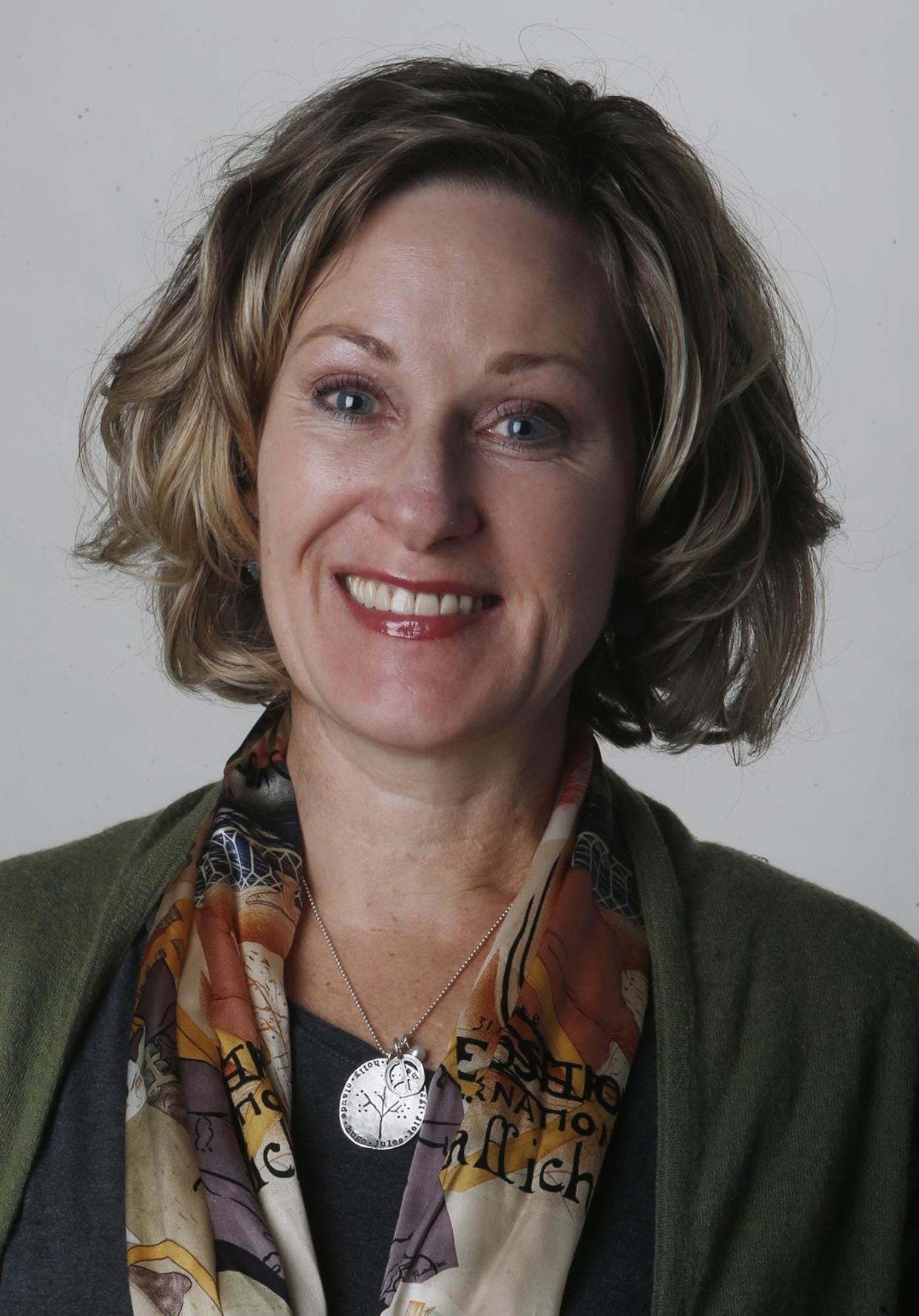Holly Christensen: Not today, COVID

While none of us gets out of here alive, we do have the ability to influence how we exit or, more pointedly, how we don’t.
A healthy diet and exercise, for example, can prevent myriad issues from diabetes to heart disease. But without the fangs or claws of imminent demise, distant consequences seem improbable and make the call of fast food and couches easy to answer.
The first global pandemic in a century, however, trucks in both distant and immediate devastation.
In what felt like the flick of a switch, life changed in March 2020. Two of my five children returned home from college, while the elementary schools of my youngest two suddenly shuttered.
Those first months were both a blast and terrifying.
More: Holly Christensen: War veteran, 99, still feels survivor's guilt
Together the seven of us raucously cooked and ate meals, played euchre and walked dogs in parks. I had luxuriously long talks with my children, particularly my second son, who adopted a puppy soon after he’d returned to Akron.
Meanwhile, information how COVID-19 is and isn’t transmitted whiplashed our brains as fast-flung guidelines changed. Now seemingly absurd, at first we worried about touching items in the grocery store lest the last person who touched them had COVID, while simultaneously we believed masks to be unnecessary.
Then we were told masks are the best first line of defense against the virus, which is commonly spread by airborne droplets, and that wiping down our groceries was unnecessary as the virus quickly dies on nonliving surfaces.
This seesaw environment of safety protocols is actually how science works. Information yields new hypotheses and new standards, which is why scientists love being proven wrong! Unfortunately, there were those who used this important process to attack whether there really was a virus for their own political gain at the cost of millions of lives.
My family decided to bunker down until we had what we ascertained as consistently reliable information. My two youngest children saw little more than home and yard for the better part of four months.
Then came the 2020-2021 school year. I taught hybrid classes at the University of Akron, poorly dividing my line of vision between “roomies,” i.e., the students physically in class with me, and “Zoomies,” or those who attended online.
My eldest son began graduate school in Texas where masking regulations were few and seldom followed. He lived and studied in his apartment like a monk, leaving only for daily runs and weekly trips to the grocery.
But that remote school year was far and away hardest on my youngest two children. Even though we regularly checked his browser history, our fifth grader was routinely discovered to have skipped out on classes to peruse websites.
My daughter, Lyra, who has Down syndrome, was in the first grade. Benefits wrought from years of speech and occupational therapies seemed to wash away like sand castles at high tide as she went from mostly talking in complete sentences to speaking only key words.
During the early weeks of the pandemic, hot spots in faraway cities brought hospitals to their knees as patient numbers exceeded capacities and health care workers struggled to meet the need. By the time the same happened in Summit and surrounding counties, it seemed an inevitability.
Eventually several people I know contracted and recovered from COVID. It wasn’t until this fall, just as the infection rates of the delta variant began declining, that COVID began killing friends and family members of mine.
The first was the cousin closest to my age on my dad’s side. Brent Christensen was 51 when he died in September. Twenty days before his death, he became a grandpa for the first time. I last saw Brent after the burial of our Grandma, who died at age 90.
Like everyone, I long for this pandemic to be in the rear window of our lives.
My second son, who worked in health care at the time, was the first of us vaccinated against COVID. I was the second, receiving my first two shots in April. My ex-partner and other two adult sons were all vaccinated soon thereafter. Last month, I boostered up.
My daughter has long been my biggest COVID concern. Several months into this pandemic, ample data made it clear that when people with Down syndrome contract COVID-19 they are more likely to develop serious symptoms, require hospitalization and die.
Perhaps the research moved as fast as it could, but the wait for a COVID vaccine for children age 5 and up was frustrating. Lyra desperately needs in-person education and while masks are excellent at reducing rates of infection, they are nowhere as effective as herd immunity.
How do I spell relief? V-A-C-C-I-N-A-T-E-D. My youngest two got their first jabs at the earliest appointment we could find once the FDA approved the kid formulation.
The science on vaccines is clear: They are the surest and safest way to stop cycles of COVID variants from shutting down our schools, businesses and lives.
One day I will die, as will those around me. Loved ones, family, friends and strangers alike, we are all on this one-way journey together with little to no control over what brings us to our final destination. What we can control, by means of vaccination, is the likelihood that it’s COVID-19.
Contact Holly Christensen at whoopsiepiggle@gmail.com.
More: Holly Christensen: The horns give it away: My son is a Viking
This article originally appeared on Akron Beacon Journal: Holly Christensen: Not today, COVID. Science on vaccines is clear

